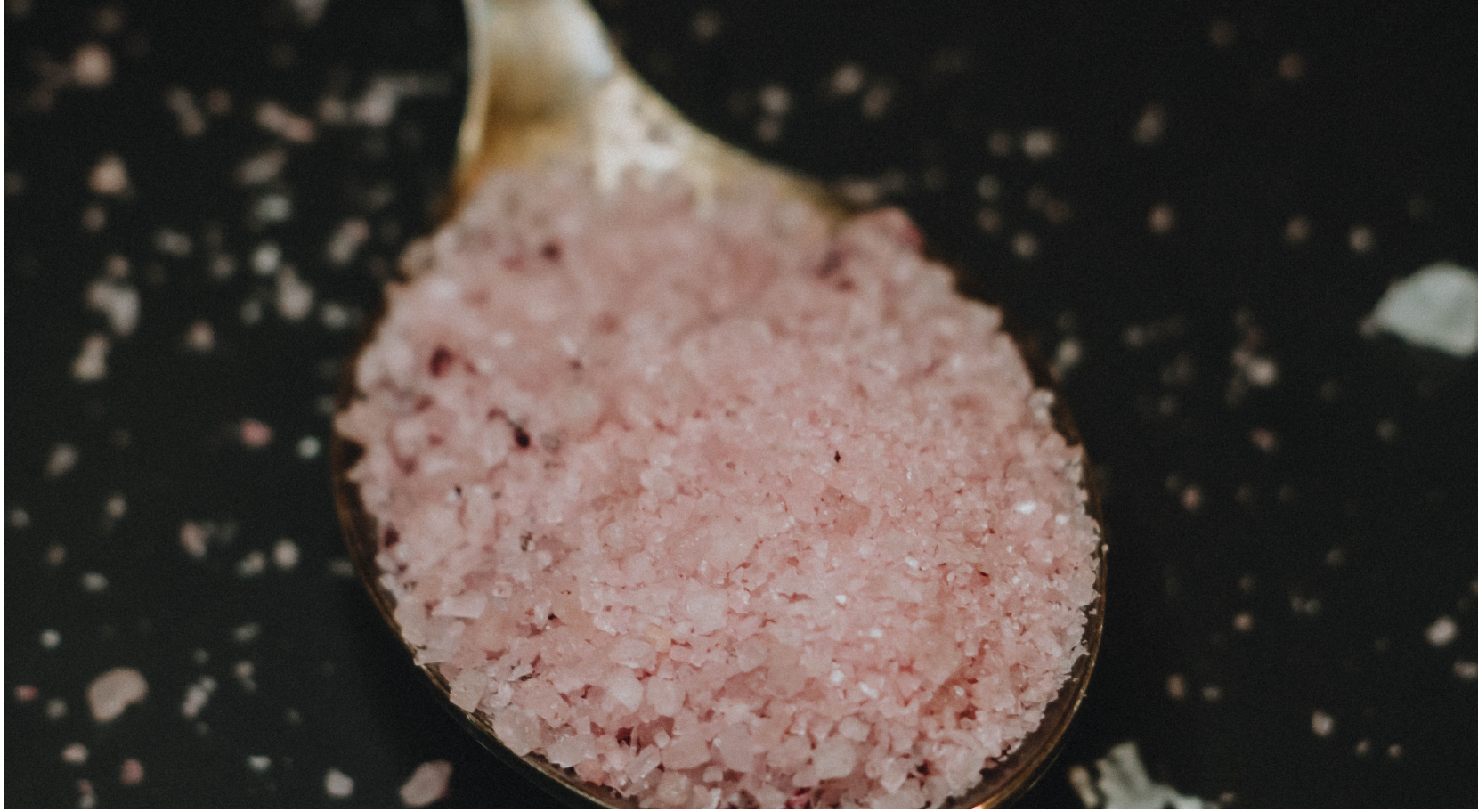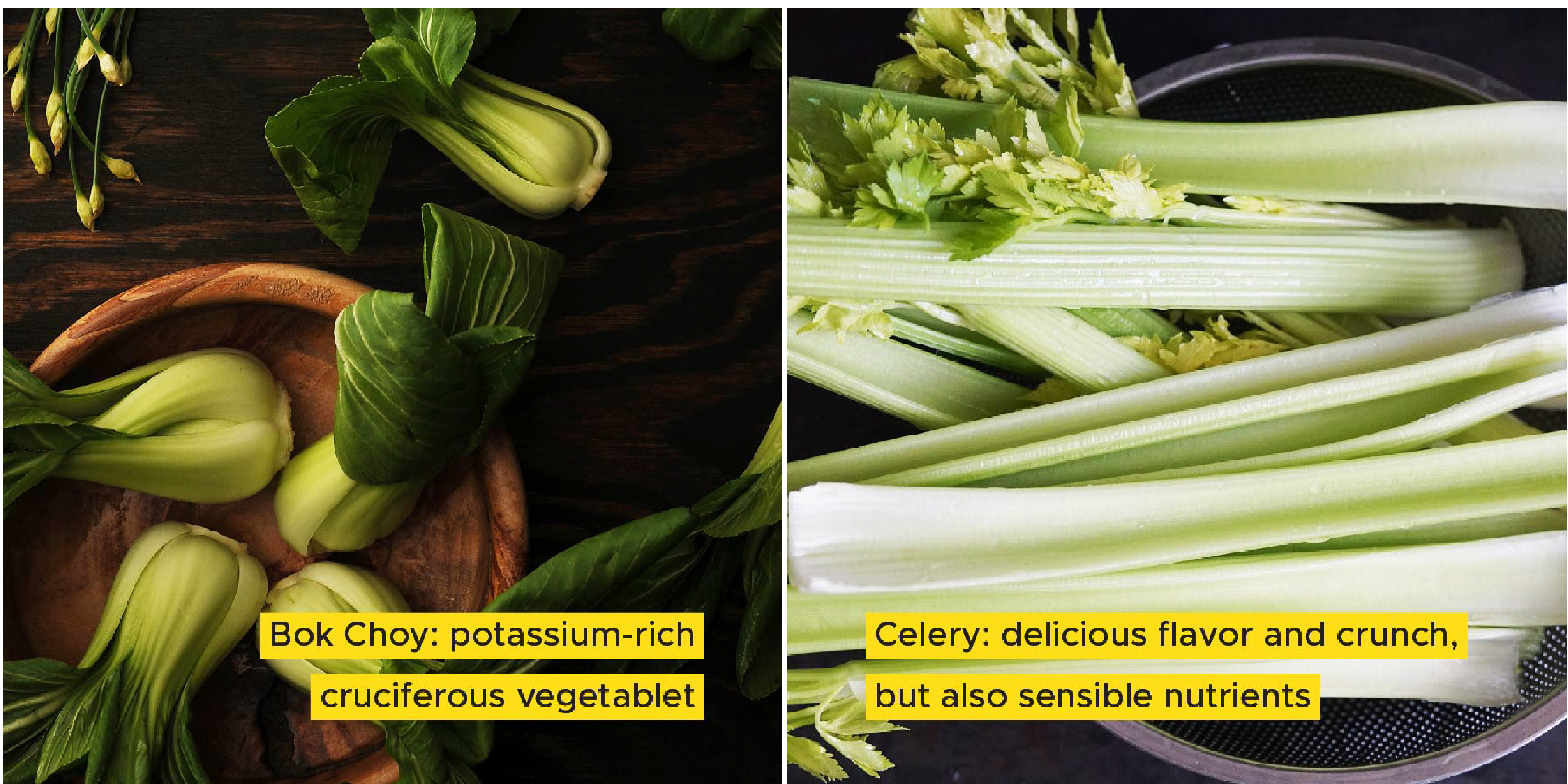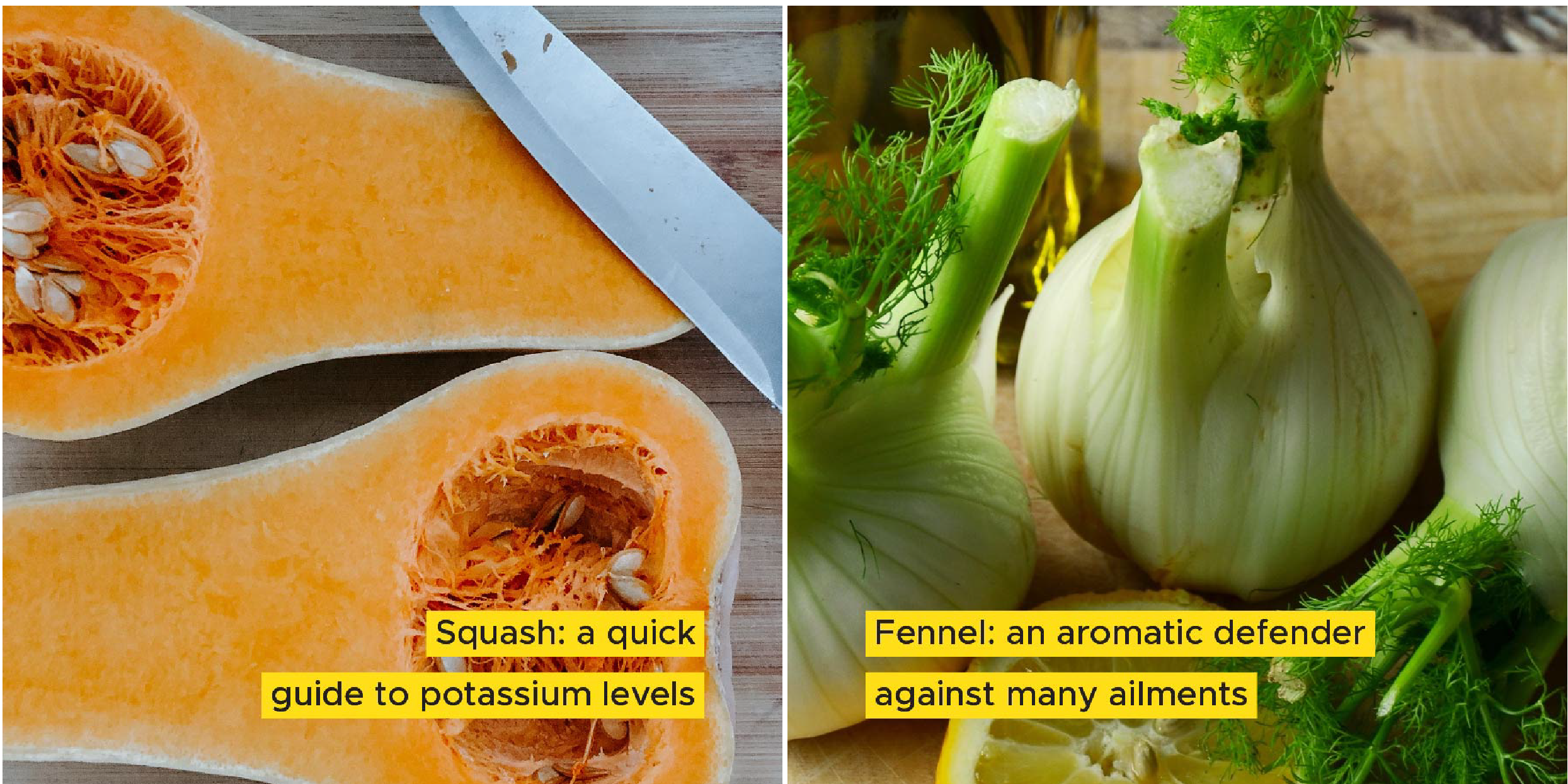Squash: a quick guide to potassium levels
The levels vary across the varieties, but they are all still healthy sources of potassium. ‘Winter’ squashes like the acorn, butternut, buttercup, hubba, pumpkin, Japanese kabocha, spaghetti & turban are rich in potassium, providing 250 – 445 mg per ½ cup cooked. The others like bitter melon, silk squash, fuzzy melon, winter melon, chayote, pattypan, globe, scallopini, yellow squash and zucchini are lower in comparison, with ½ cup providing 90 – 250 mg potassium.
Fennel: an aromatic defender against many ailments
Fennel has a long history as a charm against evil spirits, ancient remedies and even as an appetite suppressant for fasting. 100g of fennel gives 414 mg potassium, or 9% of the recommended DV. This helps in regulating the blood pressure. Fennel also has significant amounts of fibre (3.1g per 100g), that helps in digestion and metabolism. Fennel also has other rare micronutrients like selenium and copious amounts of Vitamin C and B6, along with zero cholesterol, that helps maintain heart health, boosts immunity and promotes skin health. |





